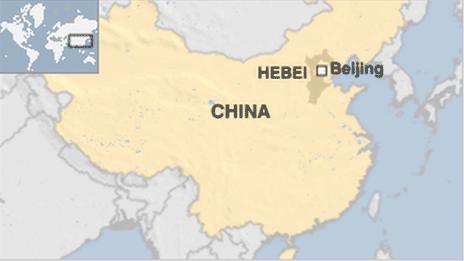China's museum boom hatches roast duck tribute
- Published
Martin Patience reports from Beijing on China's more eclectic range of museums, including one dedicated to roast duck.
When you think of museums in China you may have calligraphy, landscape paintings or even Ming vases in mind. Not, I would suggest, a giant statue of a golden duck.
But one of Beijing's latest cultural offerings is a museum dedicated to the capital's most famous culinary dish - roast duck.
It was built by the well-known Quanjude restaurant chain and most of the visitors are actually peckish customers waiting to be fed.
"It's funny," said one high-school student visiting the museum. Funny, perhaps, but to be fair to the museum, which opened earlier this summer, it is also pretty informative.
The exhibits include clay models showing you how to prepare roast duck, restaurant advertisements from a bygone age, and various pictures of famous people - including, surprisingly, the actor Charlie Chaplin - eating Peking duck.
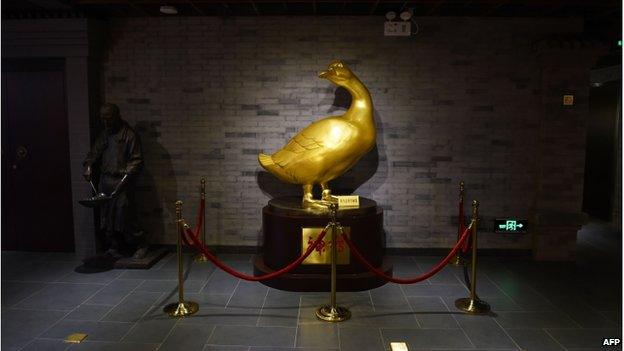
Visitors can feast their eyes on a giant golden duck at the museum
The museum is part of an astonishing building boom quite unlike the world has ever seen. Last year, a new museum in China opened its doors almost every day. This year a further 100 are slated to be built.
Chinese visitors are now spoilt for choice. Among the country's more bizarre offerings are museums dedicated to watermelons, socks and even concrete.
"The boom is going to continue because the funding is there and the interest is there," says Cathy Giangrande, a co-author of the Chinese Museums Association Guide. "China is trying to reach the number of museums they have in the US per head of the population."
Ms Giangrande says that the building boom represents a major change in Chinese history.
"Less than 50 years ago everything was being destroyed during the Cultural Revolution," she said. "So anyone who was a private collector or had a private museum was banned.
"It wasn't something the government was proud of or wanted the public to learn from. That's now all changed. They really are on a learning journey."
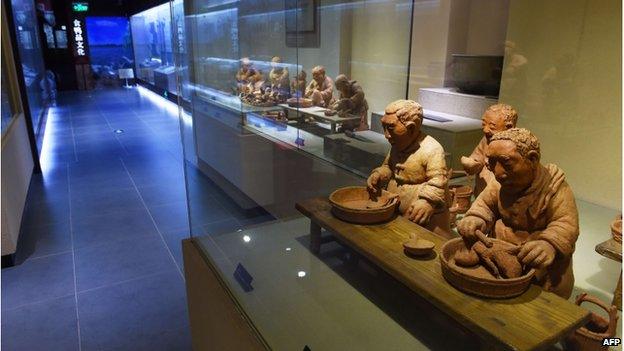
The exhibits include clay models showing you how to prepare roast duck
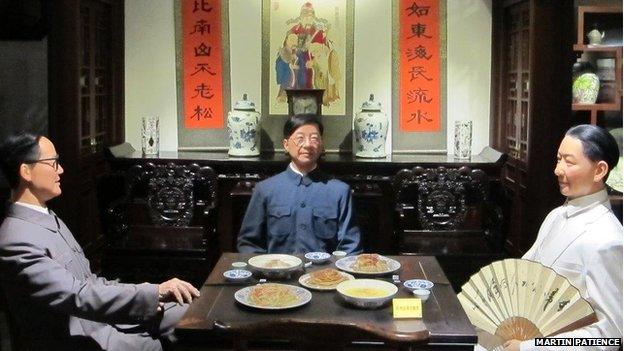
The roast duck museum was built by the Quanjude restaurant chain
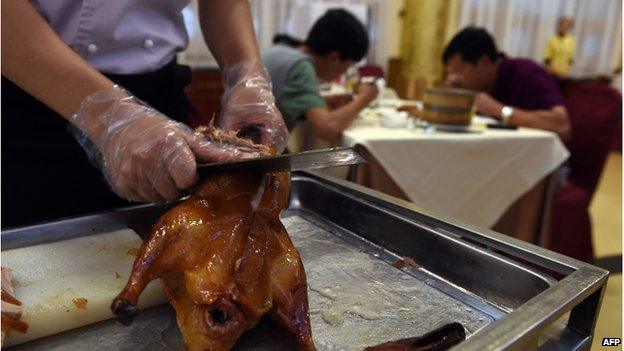
The museum is attached to a Quanjude outlet where visitors can try the specialty - Peking duck
China's cultural scene has certainly flourished in recent years from art, to music and, of course, museums. Curator Cheng Guoqin says part of the reason the government supports the opening of new museums is that it improves the country's image.
"The government has realised that economic success is not enough," she says. "It realises that soft power and the creative industries must play an important role."
But she says that bricks and mortar are only part of the story. "For a museum the real definition is not just displaying art but preserving art and educating the public," she said. . "On this point, I think we're still lagging far behind."
The Chinese government still censors what the public can and cannot see - anything politically sensitive remains strictly off limits.
But in terms of choice from the traditional to the contemporary, from natural history to, well, the just plain wacky, your average Chinese museum visitor has never had it so good.
- Published31 January 2014

- Published16 July 2013
